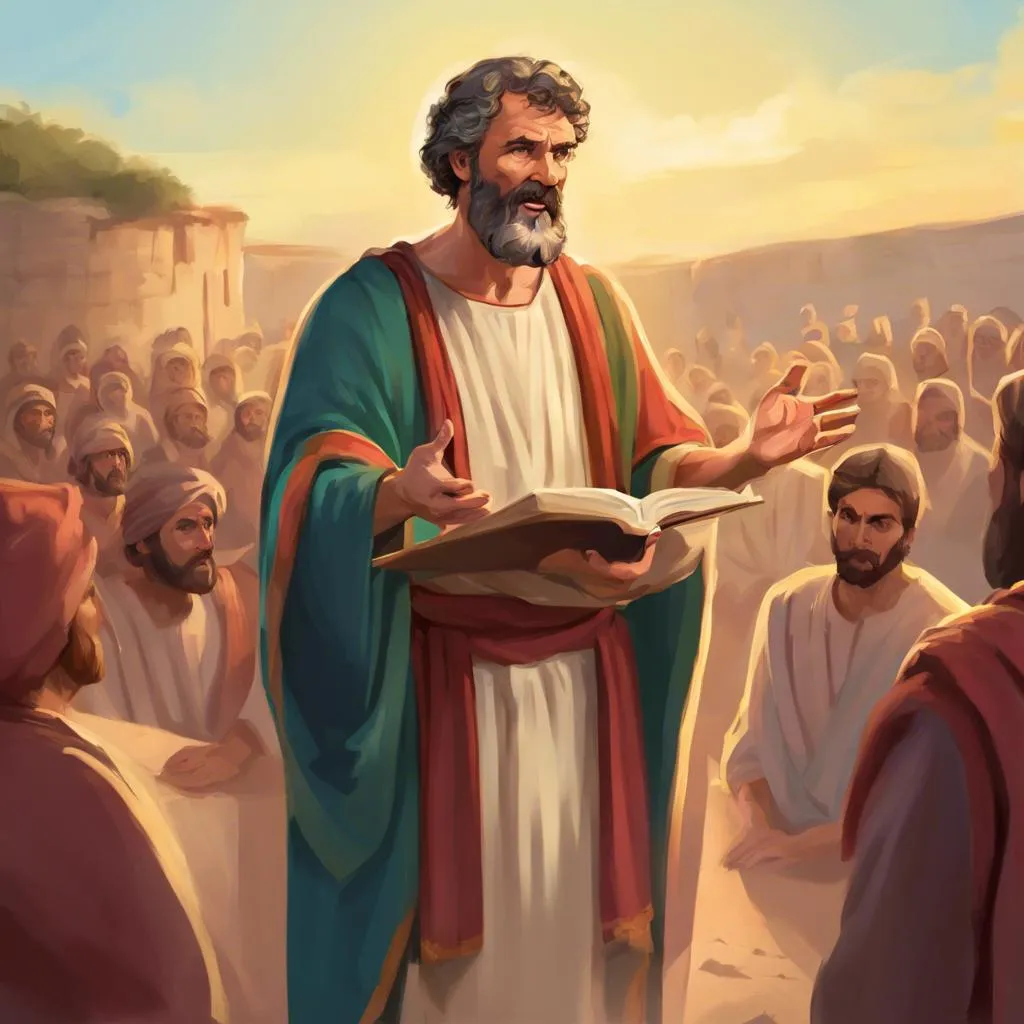
Theological Missions in Acts Part One
Have you ever done a study on systematic theology? I have in a theology class. Often, these classes prepare students not only for the depth and breadth of the study (for example, a study on the church) but also for students to have connections or themes to teach in a church or Sunday school class. In this essay, the discussion will cover running themes in the book of Acts. The book of Acts presents several recurring themes that highlight critical teachings within the early church, including the role of the Holy Spirit at Pentecost, persistent themes within the church, elements compared in Peter’s speeches, and the primary nuances in Stephen’s speech before the Sanhedrin. These themes are not just historical events, but they carry significant theological implications that continue to shape the Christian faith today.
The first point is that the book of Acts presents running themes that convey critical teachings about the early church, beginning with the Holy Spirit at Pentecost. The Great Commission is successful throughout the book of Acts, and the Gospel spreads far and wide throughout the nations.[1] Jesus Christ describes to the disciples how they will receive power from the Holy Spirit. They will be His witnesses to Jerusalem, Judea, Samaria, and to the ends of the earth (Acts 1:8).[2] One of the first advances of the Gospel occurred in the city of Jerusalem, which began when devout Jews from every nation under heaven gathered in this great city (Acts 2:5). In the Gospels, Jerusalem was the pinnacle of the work, culminating in Christ’s Passion.[3] Jerusalem is mentioned 670 times in the Hebrew Bible.[4] After the great persecution, it is essential to note that the apostles remained in Jerusalem (Acts 8:1). Another vital connection is the Jerusalem Council's discussion of the implications of Gentiles being saved through circumcision (Acts 15:1, 4-5). Later, the people urged the Apostle Paul not to go towards Jerusalem, which eventually led him to go as far as Rome to preach the Good News of Jesus Christ (Acts. 21:11-12, 28:17). John Polhill also notes this change in the Gospels, “This “journey motif” is strongly reminiscent of Jesus’ final journey to Jerusalem in the Synoptic Gospels. The same forebodings marked Jesus’ journey—the same strong resolve on Jesus’ part, the same misgivings on the part of his disciples. In the Gospels, Jesus’ predictions of his coming passion provide the ominous tone.”[5] Throughout this impactful journey, Jerusalem served as a launchpad for the Gospel, which was preached as far as Italy (Acts 28; Hebrews). The following section discusses different themes in Acts.
The second point is that the Book of Acts presents recurring themes that convey critical teachings from the beginning of the early church through to the church's development. The first is the theme of God, in which His sovereignty is displayed through choosing the twelfth disciple, Peter’s sermon, which assembles the church, an apostle with John suffering for Christ before the council, the sin of Ananias and Saphira, and the death of Stephen, which lead to a dispersion among the early church Christians (Acts. 1:12-26, 2:14-47, 4:1-31, 5:1-11, 7:54-8:1). The nuance of the kingdom of God is presented through the apostles with women devotion to prayer, the coming of the Holy Spirit, the believers pray for boldness, Christians were of one heart as well as soul, serving the needy, and Stephen death which outcome is as presented in the theme of God (Acts. 1:14, 2:1-13, 42-47, 4:23-37, 6:1-7, 7:54-8:1). Ger describes the kingdom of God as part of the Holy Spirit to the disciples, that the Holy Ghost is a down payment of the great kingdom to come.[6] While the Holy Spirit, suffering for Christ, holding to Roman law, and prayer are implicitly shown in these previous examples, the final theme to mention is the contrast between the believing and unbelieving Israel. The idea is that the beginning of the early church was the believing Israel, and then the other religious groups opposing the Christians were the unbelieving nations. They are contrasting the separation between Jews who believe in Jesus and those who choose to continue obeying Judaism. This theme is presented in Acts with Peter before the Sadducees, the apostles arrested yet further given liberty out of prison by God, and Stephen before the council, which eventually leads to Saul oppressing the church (Acts 4:1-22, 5:17-42, 6:12-8:1). The next section discusses Peter’s speeches.
The third point is that the book of Acts presents running themes that convey vital teachings about the early church through elements comparable to Peter’s speeches. The first noticeable element is Peter’s direct address, both described based on the current situation, whether to the devout Jews, to the people around temple Beautiful, or to the Sanhedrin (Acts. 2:14-15, 3:12, 4:8-9, 5:29). God used Peter’s exposition to pierce into the crowd’s hearts conviction, resulting in hardened hearts or softly follow the Lord. The second element is the use of the Hebrew scriptures, which in these sermons Peter is describing prominent people of God in the Old Testament, prophecies, Jesus Christ’s illustrations, and purposes (Acts. 2:16-21, 25-30, 34-35, 3:13-18, 22-25, 4:11, 5:31). The final element is that of Jesus Christ, to repent to Him, to spread the Gospel, addressing their guilt in crucifying Him, salvation through no person except Him, and speaking truth (Acts. 2:22-36, 3:13-26, 4:10-12, 5:29-32). Ger describes how Peter was bold, and his actions angered the Sanhedrin. However, Gamaliel the Pharisee intervened, as Peter’s speech had no legal offense.[7] His speech had a profound impact on many people who came to know Jesus Christ. The following section discusses the themes in Stephen’s speech.
The fourth point is that the book of Acts presents running themes that convey critical teachings at the beginning of the early church, as well as the primary nuances in Stephen’s speech before the Sanhedrin. Stephen’s speech impacted various groups, Christians and the Sanhedrin. Two present themes need to be addressed in his sermon. The first topic presented in his speech is rejecting God’s people, and Yahweh cannot be put into a box. Stephen describes how Joseph was rejected by his brothers and Moses, his nation (Acts 7:9, 35). Furthermore, Ger describes how Stephen’s rejection by the people was among the worst rejections in the book of Acts.[8] The final area is confining God in a building, which he discusses in detail, referencing the Tabernacle and Solomon’s temple (Acts 7:44-50). Ger further explains that the temple is not the end of all worship; God’s plan for prayer is changed to one that is no longer wholly confined to a synagogue.[9] In his letter to the Hebrews, Paul notes that sacrifices were not sufficient for ultimate atonement; it is in Jesus’ crucifixion (Heb. 10:4-6).[10] Stephen’s audience was furious at this and killed Stephen (Acts 7:54-60). God used Stephen’s speech to spread the Gospel to other nations through these actions.
In conclusion, the Book of Acts presents several recurring themes that convey essential teachings about the early church, including the role of the Holy Spirit at Pentecost, persistent themes within the church, elements compared in Peter’s speeches, and the primary nuances in Stephen’s speech before the Sanhedrin. My call to action is to examine the recurring themes present in the Acts of the Apostles.
Bibliography
Eusebius of Caesarea. “The Church History of Eusebius.” In Eusebius: Church History, Life of Constantine the Great, and Oration in Praise of Constantine, edited by Philip Schaff and Henry Wace, translated by Arthur Cushman McGiffert. Vol. 1. A Select Library of the Nicene and Post- Nicene Fathers of the Christian Church, Second Series. New York: Christian Literature Company, 1890.
Polhill, John B. Acts. Vol. 26. The New American Commentary. Nashville: Broadman & Holman Publishers, 1992.
Ger, Steven. Acts: Witnesses to the World. Twenty-First Century Biblical Commentary Series. AMG Publishers, 2004.
[1] Unless otherwise noted, all scripture referenced is in the English Standard Version.
[2] Through the work of Dr. Hendricks, a past faculty member at DTS. Provided methods for Bible study to new Seminary students. Fifty to one hundred observations just from this passage.
[3] Note this in Matthew, Mark, Luke, and John.
[4] Steven Ger, Acts: Witnesses to the World, Twenty-First Century Biblical Commentary Series (AMG Publishers, 2004), 26.
[5] John B. Polhill, Acts, vol. 26, The New American Commentary (Nashville: Broadman & Holman Publishers, 1992), 431–432.
[6] Ibid, 24–25.
[7] Ibid, 89.
[8] Ibid, 104.
[9] Ibid, 105-106.
[10] For more information on the author of Hebrews. Note Eusebius Ecclesiastical History, 3.3.4, 6.14.2-4.


